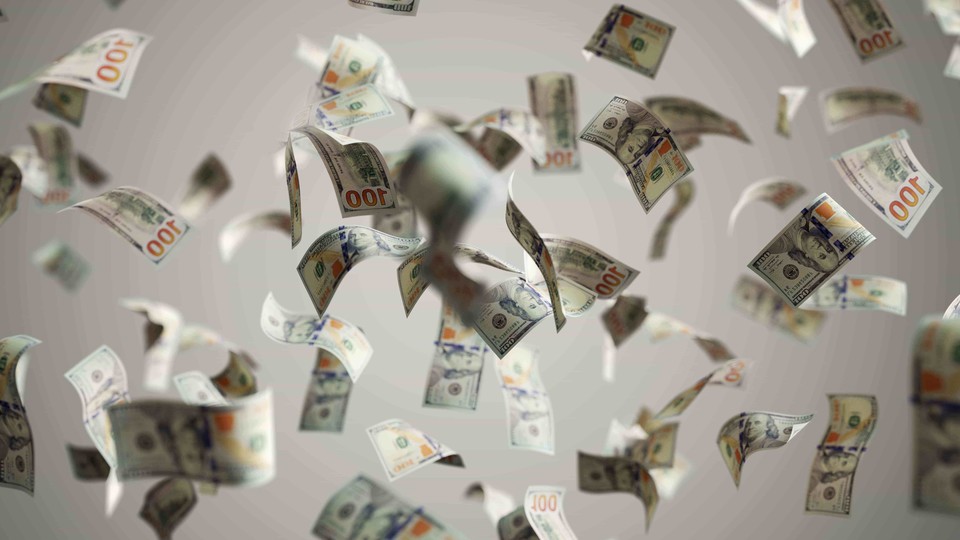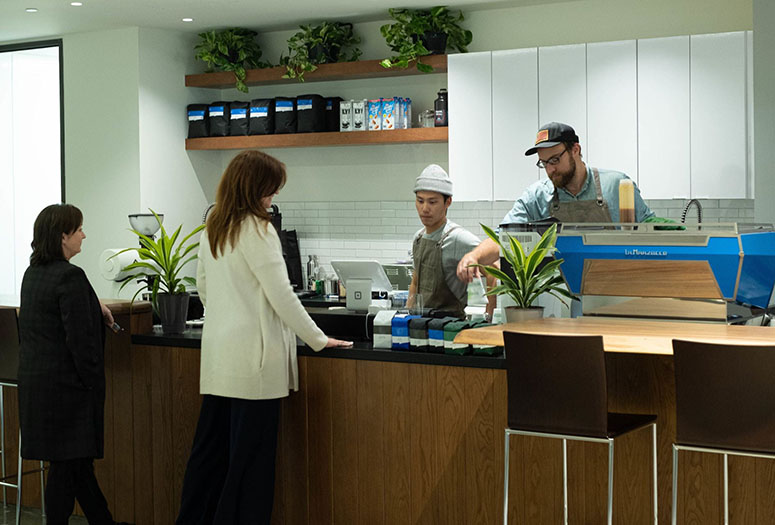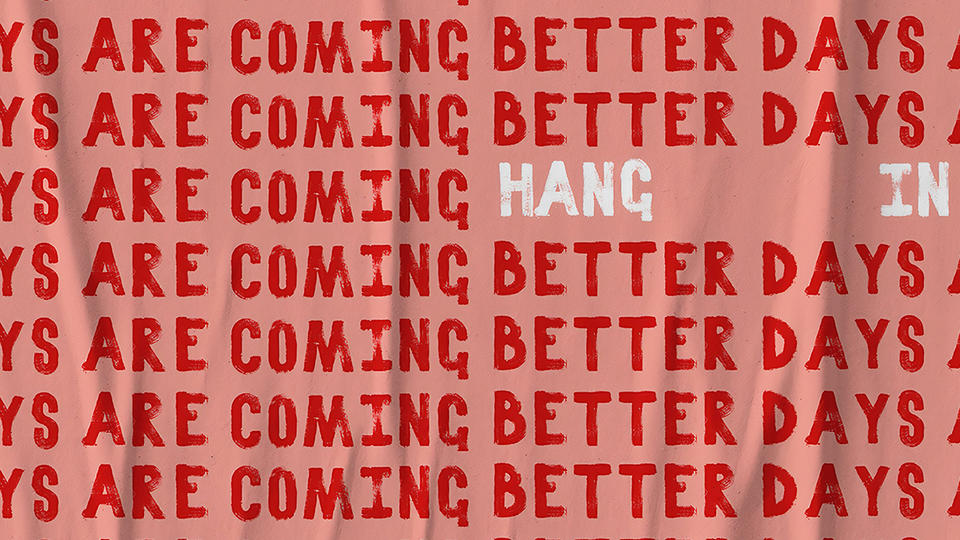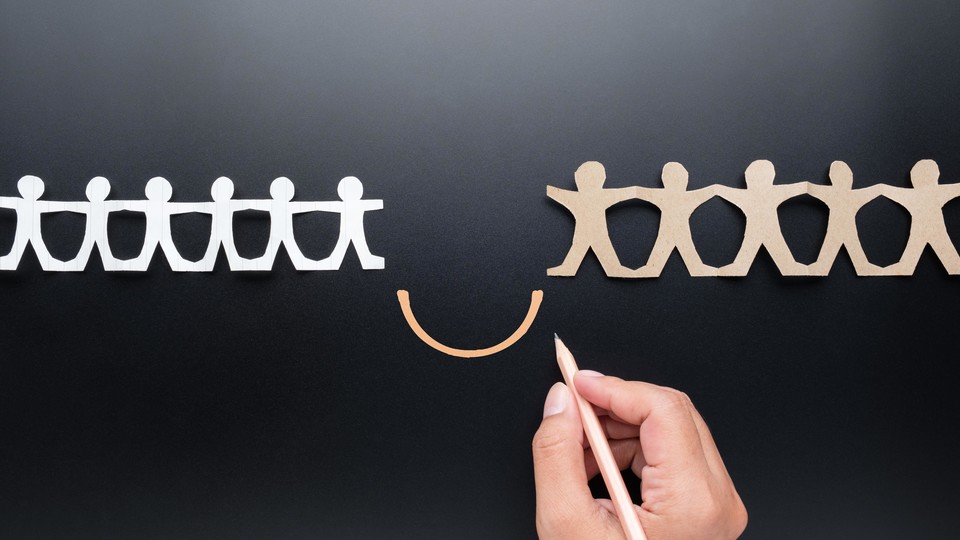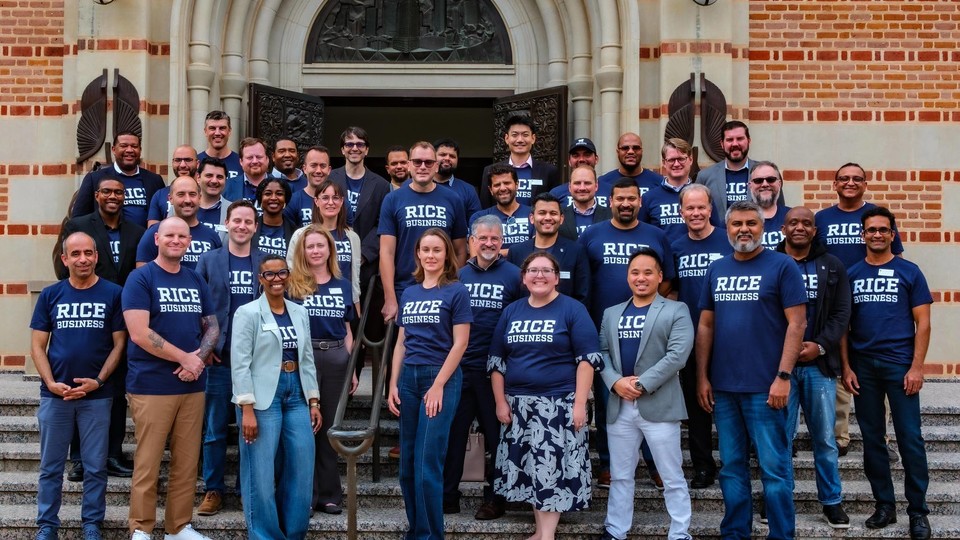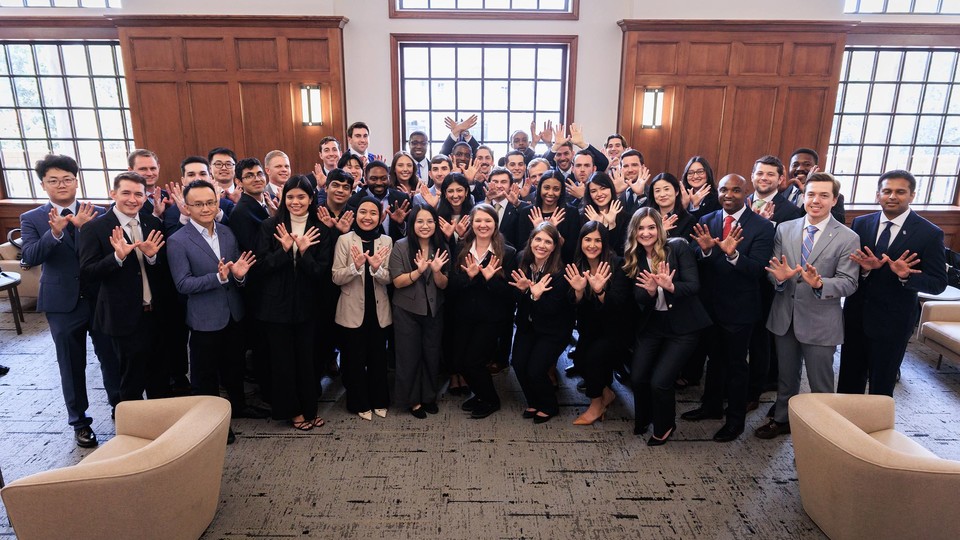How Corporate Decisions Fuel Protest Movements
Company choices can actually drive the evolution of activism, triggering mobilization in other causes.


Based on research by Alessandro Piazza and Fabrizio Perretti
Key findings:
- Persistent activists can move mountains — or at least company locations.
- Companies that capitulate to protestors may encourage them to protest for more. Companies that win against protestors may catalyze them to join similar movements nearby.
- Winning or losing a protest showdown can have long-term effects on other controversies.
It’s been more than 100 years since Pavlov’s dog showed the world that behavior is often guided by forces we don’t comprehend.
The same is true of the interaction between companies and protestors, according to Rice Business professor Alessandro Piazza and Fabrizio Perretti of Bocconi University in Milan. In a recent study, the scholars show that when protestors fight to change a company’s policy, their future choices of where and how much to protest are shaped by the company’s response.
Moreover, the outcome may not be what either group has planned for. Companies that meet protestor demand often inadvertently spur the protestors to demonstrate further; conversely, companies that refuse to give in tend to propel protestors to redirect their energies toward related but different issues.
The researchers based their conclusions on a deep dive into the anti-nuclear movement of the 1970s and 1980s, and a close analysis of protests and company responses in specific locations.
During the time period studied, the researchers found, public sentiment toward nuclear energy changed from mild support to open hostility in the form of an organized protest movement. To quantify this movement’s impact on nuclear power plant construction, the researchers studied the aftermath of protestors’ local victories.
In Massachusetts, for example, the first nuclear power protest in 1974 persuaded Northeast Utilities to postpone, and then permanently cancel, its plant. This reaction, Piazza and Perretti found, catalyzed local protestors. In the years that followed, the region became one of the United States’ strongest bastions of anti-nuclear activism.
In order to quantify how company actions affected protests, the researchers first measured the number of U.S. protest events by geographic location from 1970 to 1995. They then compared this number to the number of nuclear facilities either completed or cancelled over a one-year time period within 100 miles of a given demonstration. They included controls to account for local economic and political differences upon local activism, and for any geographic bias of the newspaper sources used to identify protest events.
The patterns they found were intriguing. Proposing a new plant for construction boosted anti-nuclear protests by 18 percent in a 100-mile radius. Cancelling construction of a plant drove a 27 percent increase in anti-nuclear protests. And when a new nuclear plant was completed and connected to the grid, the researchers witnessed a 2.3 percent increase in the number of protests not directly aimed at nuclear power plants.
The reason for the increase in other protests when a company prevailed and built a power plant? The researchers hypothesize that each time a plant was completed, demoralized activists attached themselves to other movements.
These results raised a related question. Did company decisions on one type of controversy, such as a nuclear power plant, lead to greater support for related protest movements or for unrelated ones? The former, it turns out.
To measure this, the researchers again looked at protests within given regions and categorized them into anti-nuclear weapon protests, environmental protests, public policy protests, anti-war protests and protests against the proximity of a given plant to a specific property, that is, “not in my backyard” protests.
Nuclear power opponents, they found, were most likely to turn to adjacent issues such as protests against nuclear weapons. Protest activities, in other words, have a domino effect.
While most research tracks the effects of activism on companies, Piazza and Perretti’s study shows that the way companies act is also a critical event driver. Company choices can actually drive the evolution of activism, triggering activist mobilization in other causes.
The research represents a challenge to traditional explanations of activism, which usually assume that mobilization and protests are most effective early on then dwindle over time, regardless of the behavior of the organization.
Piazza and Perretti’s findings suggest a valuable lesson for companies, especially those operating in more than one location: Their decisions in one place may actually escalate activism elsewhere. Pacific Gas & Electric successfully acted on this insight in the 1980s. Working with the Sierra Club, the company swapped the cancellation of one site at Bodega Bay, California — the target of frequent protests — for support of a plant at a second site elsewhere in the state at Diablo Canyon.
The findings also offer important insight for activists choosing a company on which to focus. These activists should keep in mind that the companies most likely to capitulate are also the ones most likely to feed a movement going forward — providing, in effect, the possibility of a double win.
Meanwhile, even if they fail in one effort, activists can take heart that their energy isn’t necessarily wasted. Only a little further afield, a similar movement may gain momentum from demoralized protestors looking for a new cause.
Piazza, A. & Perretti, F. “Firm behavior and the evolution of activism: Strategic decisions and the emergence of protests in U.S. communities.” Strategic Management Journal 41.4 (2020): 681-707. https://doi.org/10.1002/smj.3116
Never Miss A Story
You May Also Like
Keep Exploring
China trade deal so far not worth the cost [Editorial]
“Trade wars aren’t worth it and this one wasn’t worth it, either,” Peter Rodriguez, dean of Rice University’s Jones Graduate School of Business told the editorial board. “It may have been faster, but we could have gotten here in much easier ways.”
Law Of The Jungle
How short sellers keep the market healthy.


Based on research by Alan Crane, Kevin Crotty, Patricia Naranjo and Sebastien Michenaud
How Short Sellers Keep The Market Healthy
- Short sellers are often maligned in the stock market.
- Some claim short sellers artificially push down stock prices, sabotaging firms.
- But short sellers may actually help the market by revealing when a stock is overpriced.
Hike into any environment where different species coexist. Whether it's the jungle or the U.S. stock market, the large beasts and investors tend to receive the most admiration and attention. The burrowers, the foragers, the critters that dig and sting are mostly seen as pests. This is definitely the case with those least-glamorous investors: short sellers.
But in most ecosystems, all the participants serve a useful function. And in a recent paper, Rice Business professors Alan D. Crane, Kevin Crotty and Patricia Naranjo and former Rice Business professor Sebastien Michenaud show that it’s time to revisit the popular view of short sellers. These often-maligned market players "borrow" shares from brokers in order to sell them and then rebuy them — ideally at a lower price. According to their many critics, short sellers are guilty of artificially pushing down prices, intentionally sabotaging firms’ reputations in order to turn a profit.
Using an innovative research technique, the Rice Business scholars showed that this stereotype is false. Not only do short sellers not distort stock prices, banning them has no impact on the market. In fact, the researchers say, there is ample evidence that short sellers can offer a valuable service.
These findings give a new look at a species of investor vilified for centuries. Suspicion of short sellers has existed at least since the 17th century in Amsterdam, where an early version of today's Wall Street trading took place on a city bridge. These concerns have intensified during financial crises: Governments banned short sales in Britain during the 1700s after the collapse of South Sea investment mania, in the U.S. in the 1930s after Britain abandoned the gold standard and during the 2008 global financial crisis.
As the SEC explained in the last instance, "Recent market conditions have made us concerned that short selling in the securities of a wider range of financial institutions may be causing sudden and excessive fluctuations of the prices of such securities ... so as to threaten fair and orderly markets."
The reality is that the effects of short selling have been hard to pin down. A 1977 study argued that short-sale bans support stock prices by blocking short sellers' overly gloomy projections and encouraging the more optimistic prices accepted by other buyers. A 2003 study, on the other hand, argued that banning short sellers could actually cause market crashes by keeping legitimate bad news out of the pricing process.
One problem is that the variables in real-life markets are almost impossible to isolate. The Rice researchers found an ingenious solution: They headed to Hong Kong, where a distinctive policy allowed them to compare the prices of almost identical companies, some eligible for short sales and some not.
Each quarter, the Hong Kong Stock Exchange bans short sales for companies that fall within a particular set of criteria, including size and turnover. For many firms that fall just to one side or the other of these thresholds the difference is mostly due to chance. By comparing firms just inside and just outside the thresholds, the Rice Business researchers were able to show that banning short sales had no impact at all on stock prices.
Critics of short sellers are right about one thing, though: These industrious but unpopular buyers really do play a role in the market. But it's a good one.
"Our results show that short sellers are not driving prices down," Crane explains. "Yes, these guys are showing up when things are bad. But they are not the cause. Other research shows that some are very diligent about reading fundamental research. They show up when things are not going well. They uncover fraud."
These services can make a difference for mainstream investors. If a stock is overpriced, for example, investors can be hurt by buying it. When a short seller digs deeply into a company and finds a $100 stock is only worth $80 that overpricing is exposed, and the price may tumble like a rotten tree.
Like any ecosystem, in other words, the stock market is a complex and subtle place. Tempting as it may be to value only the elegant and the impressive, it turns out that the unpopular, the unaesthetic — and even the pesky — can play an important role too.
Alan D. Crane is an associate professors of finance at Jones Graduate School of Business at Rice University.
Kevin Crotty is an associate professors of finance at Jones Graduate School of Business at Rice University.
Patricia Naranjo is a former assistant professor of accounting at Jones Graduate School of Business at Rice University.
To learn more, please see: Crane, A. D., Crotty, K., Michenaud, S., & Naranjo, P. (2019). The causal effects of short-selling bans: Evidence from eligibility thresholds. Review of Asset Pricing Studies, 9(1), 137-170.
Never Miss A Story
You May Also Like
Keep Exploring
Rice PR expert weighs in on Astros cheating scandal
Astros general manager Jeff Luhnow and manager A.J. Hinch were fired by team owner Jim Crane Monday after Major League Baseball suspended them for a year each following an investigation that discovered Houston cheated using technology en route to winning the 2017 World Series.
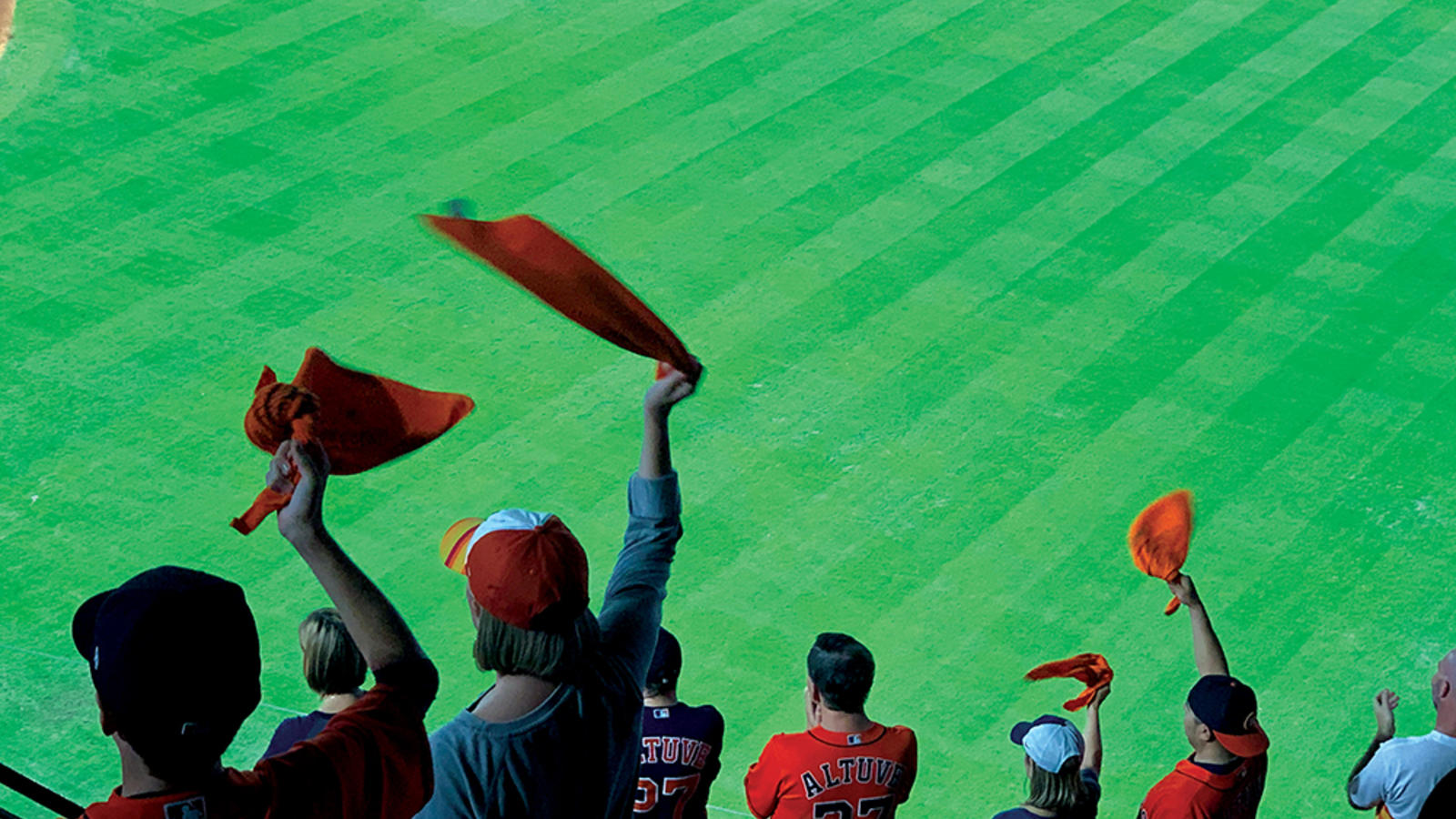

Astros general manager Jeff Luhnow and manager A.J. Hinch were fired by team owner Jim Crane Monday after Major League Baseball suspended them for a year each following an investigation that discovered Houston cheated using technology en route to winning the 2017 World Series.
“Sports is a unique context where (fan) loyalty persists in spite of transgressions by the team or its players,” said Anastasiya (Annie) Zavyalova, associate professor of strategic management at Rice University’s Jones Graduate School of Business. “Considering the Astros’ recent victory right after Hurricane Harvey, I expect Astros fans to continue to support the team in light of this scandal.”
Zavyalova is available to discuss the Astros’ crisis and reputation management with the media.
“This scandal is a chance for Major League Baseball to take a stance on how it views and punishes rule-breaking by teams,” she said. “The churning in management can be a chance for the Astros to start with a clean slate. If they succeed, it will reaffirm and strengthen fans’ loyalty and support for the team going forward.”
Zavyalova’s general research focuses on negative events in organizations and the role of the media and how stakeholders identify with and support an organization following such incidents.
To schedule an interview with Zavyalova, contact Jeff Falk, director of national media relations at Rice, at jfalk@rice.edu or 713-348-6775.
Rice University has a VideoLink ReadyCam TV interview studio. ReadyCam is capable of transmitting broadcast-quality standard-definition and high-definition video directly to all news media organizations around the world 24/7.
Follow the Jones Graduate School of Business on Twitter @Rice_Biz.
Follow Rice News and Media Relations on Twitter @RiceUNews.
Related materials:
Zavyalova bio: http://business.rice.edu/person/anastasiya-zavyalova
Jones Graduate School of Business: http://business.rice.edu
Is It Possible To Redirect The Craving To Shop?
Like dieting, though, self-deprivation from stuff is hard to sustain. Now Rice Business professor Utpal Dholakia and former Rice Business doctoral students Jihye Jung, now at the University of San Antonio, and Nivriti Chowdhry, now with Amazon, have devised an alternative. In four separate studies, the team found that it’s possible to redirect the urge to buy by reflecting on what we already have.
Audrey’s coffee shop now open in Jones School
Craving a cortado? Rice now has another option when it comes to getting caffeinated: Audrey’s, which is now open for business after a soft launch last semester.


Craving a cortado? Rice now has another option when it comes to getting caffeinated: Audrey’s, which is now open for business after a soft launch last semester.
Tucked into a first-floor corner of McNair Hall in the Jones Graduate School of Business, Audrey’s is the latest project from Houston coffee maven David Buehrer, who also runs popular shops in Rice Village, Montrose, the Heights and Greenway Plaza.
Named in honor of Audrey Moody Ley ‘35, mother of Judy Ley Allen ‘61, Audrey’s Coffee will serve as much as a community café as a place where students can learn more about the business of brewing beans.
The sunny space, which offers plentiful seating and views of the Jones School courtyard and West Quad, is open 7:30 a.m. to 8 p.m. Monday through Friday and 7 a.m. to 5 p.m. Saturday. (Photos by Jeff Fitlow)
Reflection Connection
Is it possible to redirect the craving to shop?


Based on research by Utpal Dholakia, Jihye Jung and Nivriti Chowdhry
Is It Possible To Redirect The Craving To Shop?
- Classic anticonsumption consists of three tactics: reject, restrict and reclaim. But a fourth strategy, reflection, may be more realistic.
- Consumer reflection means refocusing the desire to buy, rather than doubling down on self-control.
- Whether you’ve got a limited budget or ethical or other reasons to curb spending, reflection can be a powerful weapon against all-too-human impulse buying.
Who hasn’t been there? Minding your own business at a store, and then, suddenly swept away by novelty, packaging or plain human craving, you own a box of extra-thin Oreos or a putty-colored shirt that could flatter no living person. As tidying guru Marie Kondo puts it so clearly, you’ve bought one more thing that takes up space and provides no additional joy.
Stores take advantage of this momentary desire all the time. That’s why candy racks are poised next to the cash register and bright sale signs guide us to shirts when we’re looking for socks. In response to this eternal temptation, a body of anticonsumption research advocates measures such as boycotts, recycling or refraining from shopping altogether.
Like dieting, though, self-deprivation from stuff is hard to sustain. Now Rice Business professor Utpal Dholakia and former Rice Business doctoral students Jihye Jung, now at the University of San Antonio, and Nivriti Chowdhry, now with Amazon, have devised an alternative. In four separate studies, the team found that it’s possible to redirect the urge to buy by reflecting on what we already have.
The researchers’ objective was to understand several specific aspects of desire and consumption: whether actively recalling the use of a possession affected consumers’ willingness to pay for new items; whether the same recollection affected the desire for impulse purchasing; whether possessions designed for fun or utilitarian purpose had different effects in quelling consumer desire; and, finally, whether there might be alternative explanations for the interplay of the desire to buy and the type of possession recalled.
To answer these questions, the researchers conducted studies using a pool of fully-employed adults, recruited through Amazon Mechanical Turk, that provided a representative sample of the general population.
In the first study, participants were randomly sorted into three groups. The first group was asked to think about a possession they had recently used, the second to think about a possession they hadn’t used recently and the third — the control group — was simply shown the second part of the experiment, in which everyone viewed an array of products and was asked to estimate both their cost and their willingness to pay it.
In the second study, participants viewed one of two items in an “impulse purchase” scenario, either a jacket on sale that appealed directly to their taste and was likely to go out of stock quickly or discounted headphones that appeared to be the only pair left at that price. Participants then described how much they wanted these items on a one to seven “desire” scale, and how likely they were to buy them.
In the third study, the researchers analyzed whether a person’s likelihood of making an impulse purchase was affected by the type of possession she recalled. In this instance, half the participants were asked to recall something that fulfilled a “need” and the other half to recall something that fulfilled a “want.” Next, the same jacket presented in the second study was described in either “useful” or “pleasurable” terms, to gauge if the subjects’ desire to buy it changed with these descriptors.
Finally, the fourth study asked three groups to think about a recently used possession. The first group was asked to imagine an item they’d bought for enjoyment, the second an item bought out of necessity and the third any item they wanted to. All participants then rated their wish to use the item in question over time, plus their feelings about the item. As time passes, this study showed, people tend to believe their desire for an item will increase, no matter what item it is.
Thanks to previous research conducted together, Dholakia’s team knew one impulsive action can “drain the tank” of impulsive desire. If you’ve indulged yourself trying on a half dozen enticing outfits at one store, for instance, you’ll be less tempted to pop into the fast-fashion shop next door – even if it’s having a giant sale.
Reflecting on what we already have, the team found, redirects desire. So recalling something at home that already fulfills the item’s use, or even envisioning a different item that makes us feel happy, can divert the passion triggered by a discounted shirt.
As anyone with a credit card might surmise, these findings have a practical use. Consumers who buy too much too easily could be well served by reflecting a few seconds before acting; taking such pauses at work and in social situations, after all, is a basic skill of adulthood. Taught alongside basic budgeting, reflective shopping could be especially helpful for students getting ready for college, the researchers noted.
Reflection, in any case, is easier than austerity for people of any age. That’s why dieters do best making small, thoughtful switches like buying whole fruit instead of fruit juice, rather than with dramatic measures like vowing never to stock the cupboard at all.
In the same way, it’s easier to take a quick pause before buying than to white-knuckle it through hours on end at the mall. Back at home, with temptation safely gone, most of us regain our senses automatically. “I wish I’d bought that industrial-sized box of cookies and that putty shirt when I had the chance,” said no shopper, ever.
Utpal M. Dholakia is the George R. Brown Professor of Marketing at Jones Graduate School of Business at Rice University.
To learn more, please see: Dholakia, U., Jung, J., & Chowdhry, N. (2018). Should I buy this when I have so much? Reflection on personal possessions as an anticonsumption strategy. Journal of Public Policy & Marketing, 37(2), 260-273.
Never Miss A Story
You May Also Like
Keep Exploring
The Top MBA Programs With The Most Women
The march toward gender equity in full-time MBA programs is experiencing what’s called halting progress. Analysis of a handful of schools outside the U.S. reveals gradual progress — but makes clear that U.S. schools are leading the way in the drive to achieve and maintain equal gender representation in MBA programs.
One Of A Kind
It’s a big leap, applying for an MBA. How do you know which business school best suits your career goals? Current students and recent alumni explain what sets Rice Business apart.


Updated from original post that was published on 12/20/2019.
Top Ranking and Intimate Culture Set Rice Business Apart
It’s a big leap, applying for an MBA. While it’s a proven excellent return on your investment, it also poses a daunting question: which business school best suits your career goals?
With our small classes, top-ranked programs, tree-lined campus and collaborative culture, we deliver a truly distinctive MBA. And we stand out among MBA programs in Houston, offering a variety of formats (full-time, professional, executive, online and hybrid) to meet your needs. I’m excited to share these perspectives from current students and recent alumni about what sets Rice Business apart.
Samantha Lewis, Full-Time MBA
A native of New Mexico, Lewis is director of the GOOSE Society of Texas, a venture capital investment group that invests around $10M annually in early-stage startups. During her time at Rice Business she received the Texas Business Hall of Fame Scholarship, the National Association of Women MBA’s scholarship, and the Jones Citizen Award.
"As a two-time entrepreneur, I went back to get my MBA to learn investing strategies and how to scale companies, and scale massively. Rice Business provided me a fundamental framework to be able to keep up in the fast-paced world of venture capital. The tight-knit program lends itself perfectly to the network-driven entrepreneur and student.
As a student, I was able to take advantage of every single resource Rice Business has to offer in the field of venture capital and entrepreneurship. Rice Alliance, the school’s nationally-recognized initiative to support technology commercialization, entrepreneurship education and the launch of technology companies, put on major events that gave me exposure to startups and investors. It runs the world’s largest and richest graduate student business plan competition. Their venture forums bring 500 to 1,000 investors and startups to Rice to pitch, fund and network. Not only do you have access to these events as a student – you are encouraged to volunteer, which opens many doors."
Keri Sprung, Executive MBA
While earning her MBA, Keri worked as the vice president for communications and education at the Texas Heart Institute. She was the class representative of the Executive MBA program in her first year, co-chair of the student association for executives, Rice Business Board Fellow where she sat on the board of Children at Risk and board member of Emanu El Sisterhood.
"One of my goals was to enhance my critical thinking and decision-making skills. The case-based learning was a challenge for me at first, and by the end of the program, I was able to quickly digest the business cases, identify and summarize the central challenges and make recommendations based on business frameworks we learned in class.
I am most proud of my extracurricular achievement as our cohort Class Rep and co-chair of our Jones Student Association for Executives. Effectively working with your peers at this stage in your career is a critical skill and this two-year experience provided the perfect leadership laboratory to explore concepts from our coursework and examine my leadership style. My co-chair, Luis Rodriguez, and I overcame many obstacles and challenges behind the scenes. Even though our approaches differed sometimes, we always arrived at a solution together. Many of the issues we tackled have helped me outside of school at work and in my personal life."
Mayank Gulati, Full-Time MBA
A native of Mumbai, Gulati was previously an associate professional at CSC (Computer Sciences Corporation) and is earning his MBA with concentrations in marketing and strategic management. He is treasurer of the Rice Business Marketing Association, vice president of the Technology Association, and an officer of the Rice Business Indo-American Association.
"I had lived in various cities in India, and it’s a very diverse country to begin with, so I had interacted with people from very different backgrounds but never internationally. So I wasn’t completely confident or sure how that experience would be. But in the very first month at Rice Business I made really good friends — and before I knew it my class became like a family. I visited a friend at a bigger school and he didn’t know a coworker of mine from the same class. It was impossible to know everyone in a school that big.
The specific factors that set Rice Business apart for me were first, its ranking and reputation [Princeton Review ranked Rice Business #1 in Entrepreneurship programs and #5 in Finance] and then its student-teacher ratio. The third thing that set Rice apart was its location in Houston, the 2nd most diverse city in the U.S. I want to be a global citizen instead of just being focused on my home country, and I think interacting with people from so many backgrounds sets me up for success."
Doug Fiefia, Full-time MBA
Originally from Salt Lake City, Fiefia was previously a manager of corporate sales development at software company Workday. At Rice Business, he is earning his MBA with a concentration in entrepreneurship and strategic management. He is president of the Jones Student Association and a Rice Business Board Fellow.
"What sets Rice Business apart is the close, tight-knit community. One example: recently a bad storm caused a power outage at an apartment building where many MBA students lived. Within ten minutes, the rest of the class came together and created a list of people willing to give rides and of students willing to host other students for the night. Community isn't something we just say, it’s something we live.
We have so many talented people from all over the world, who speak many languages, worked for top companies, represent many industries, received many awards and accolades, but are still very humble and willing to help anyone out if they are needed."
Adrian Dever, Professional MBA
Adrian, a Texas native, worked as the associate asset manager at EDF Renewables throughout his MBA program. He strived to transition to management consulting, and was very involved in the program. In addition to being a first year representative for Out and Allied and the Professional MBA liaison for the Arts Club, he was also a member of the Black Business Student Association, CleanTech Association, Consulting Association, The Adam Smith Society, Energy Association, Board Fellows and the Wine Club.
“The professors at Rice Business are world-renowned, so I did not expect to have unlimited access to them. Whether it is to gain more insight into the lecture material, or just have a one-on-one chat to learn more about their background, the professors always find time to answer your questions.
I have met so many wonderful people in this program and I have developed life-long friendships that I will always treasure. Being in this program provides countless opportunities to engage and connect. Holiday parties, volunteering events and flag football competitions are just a few opportunities to bond. If you prefer a more casual environment to connect with your classmates, you can always make friends at Valhalla – the graduate student bar on campus.”
Interested in Rice Business?
Stacy Fish, Full-time MBA
Born and raised in Houston, Fish graduated from UT Austin and previously worked as an operations project analyst at Houston Methodist Hospital. At Rice Business, she will graduate with a concentration in marketing and recently accepted a position with United Airlines in pricing/revenue management. She is president of the Rice Business Women’s Organization and an officer in the Marketing Association.
"I went to a really big undergraduate school, where I was a small fish in a very large pond. I was looking for a graduate school experience that was more close-knit, where the professors knew who I was, and I knew my classmates. Having grown up in Houston I knew Rice Business was a great school. You know the resources and the faculty here are incredible. But what I didn’t know until I came here for an open house was how close and collaborative the program was and what that means in terms of your experience.
Everyone has each other's back. I think in a really big school it’s easy to say something is someone else's problem or someone else will volunteer for things, especially with clubs and student leadership. Here, you’re really encouraged to take on leadership positions right away and you get a lot of support. One of the first things I did was get involved with the student-run Women in Leadership conference. After doing that and seeing how powerful and fulfilling it was I decided to run for president of the women’s organization. That is not something I ever really thought I would do. But here it's kind of all hands on deck. All of our voices are heard. They matter."
Pierre Aristide, EMBA
Pierre was born in Haiti and came to the United States at the age of 13. Prior to joining the Rice MBA, he attended Adelphi University for English and political science and Hofstra University for a degree in military science, and he served in the U.S. Armed Forces for 27 years. Despite being diagnosed with Leukemia during COVID, he managed to complete the MBA program and maintain relationships with his cohort through various zoom activities.
“I always wanted to pursue an MBA, but it never seemed to be the right time, especially when one is attempting to raise a family. Upon setting up my business, it became obvious that I needed to have a better understanding of how to develop, scale and manage it. My military training taught me how to make decisions that require on-the-spot risk analysis, which, in our business, is the difference between life or death. As an entrepreneur, I was looking to develop similar abilities as in the military to make business decisions to better lead employees and grow my business. As such, I chose Rice Business because it had the right program and happens to be ranked, four years in a row, as the No. 1 Entrepreneurial studies business school in the nation.
However, after attending the program, I quickly realized there was more to the Rice Business program than just the ranking. The culture is different than I’d ever experienced. I met so many personal and professional life-long friends who supported me and my family during some of the health challenges I experienced during my two years in the program.”
Kendall Toarmina, Full-time MBA
Toarmina earned both her bachelor’s and master’s at Rice. While earning her MBA at Rice Business, she founded the school’s first-ever Diversity And Inclusion Conference, and she currently leads the university's LGBTQ alumni association. Toarmina was named a Woman of Power by Outsmart Magazine the year she earned her MBA. She is now a management consultant with PriceWaterhouseCoopers.
"What I felt set the Rice Business experience apart from many business schools was how inclusive the atmosphere was of our families and significant others. As a business student, I couldn't have succeeded without my friends and classmates, but I also couldn't have done it without the support of my personal circle.
The program created opportunities for that circle to understand my experience and be a part of it — through the partios [the business school’s signature afternoon courtyard parties], family day events and other receptions and programs. All of these allowed my significant other to meet my professors and classmates, see my classrooms and hear about what I was learning."
Ashley H. John, Full-Time MBA
A native of Missouri City, John graduated with a major in urban studies from Stanford University and previously worked as alumni coordinator at an educational nonprofit. At Rice Business, she is earning her MBA with a concentration in marketing. She is vice president of the Technology Association, officer of the Rice Business Black Business Student Association and Rice Consortium Chapter.
"I did a lot of researching. I was looking for programs that had a strong community that were interested in social impact as well. And I was interested in financial aid. Coming from the education field, it’s not like I had a whole bunch saved up for school. Sometimes we don’t like to talk about finances, but it’s a really big investment to go back to school. Rice Business by far had the best scholarship package of all the schools I looked at. I know many of my classmates receive some form of aid too.
Being from Houston, I know that even though Rice is in the middle of the city, it can seem out of reach. In fact, it is very down to earth: everybody here has been wonderful and very humble, even though they’re very accomplished. The Rice admissions department was transparent and seemed very invested in my growth and success. That was the driving factor for me. They have this tag line, “You belong here.” And it felt like I really did."
Yu-Cheng Hsu, Professional MBA
Yu-Cheng came to Houston from his hometown of Seattle, Washington. He transitioned his B.S. in chemistry to focus on the energy transition, and he used his MBA to further his education in that industry.Yu-Cheng was a member of the Asian Business Student Association, Energy Association, Board Fellows, and also led the very successful second annual Rice Cleantech Innovation Competition as a member of the Cleantech Association.
“What I love most about Houston is the diverse food options available across the city from the Woodlands to Katy to Bellaire and other parts of town. Houston has been known as the energy capital, but what Houston is most known for is the southern hospitality – the warm, welcoming attitude to invite new citizens and tourists. Houston has been expanding at a rapid rate, and more cultural food options will be available for Houstonians. With a cultural awareness in Houston, the community is supportive of one another and will help during disaster events.”
As for his time working full time, managing family time and taking courses, Yu-Cheng was “surprised that I can manage my full-time job while studying and meeting up with my teammates on the weekends and attending other extracurricular activities. I believe this has pushed my limits above and beyond and realize the capabilities that I have to be successful.”
You May Also Like
Honeywell acquires fast-growing Houston-based energy tech co.
Rebellion Photonics, an oil and gas technology company co-founded in 2009 by Rice Business alumna Allison Lami Sawyer, was acquired by Honeywell. The company will become part of Honeywell's Safety and Productivity Solutions business and also will be used in Honeywell's Performance Materials and Technologies business to help manufacturers improve safety and compliance.





